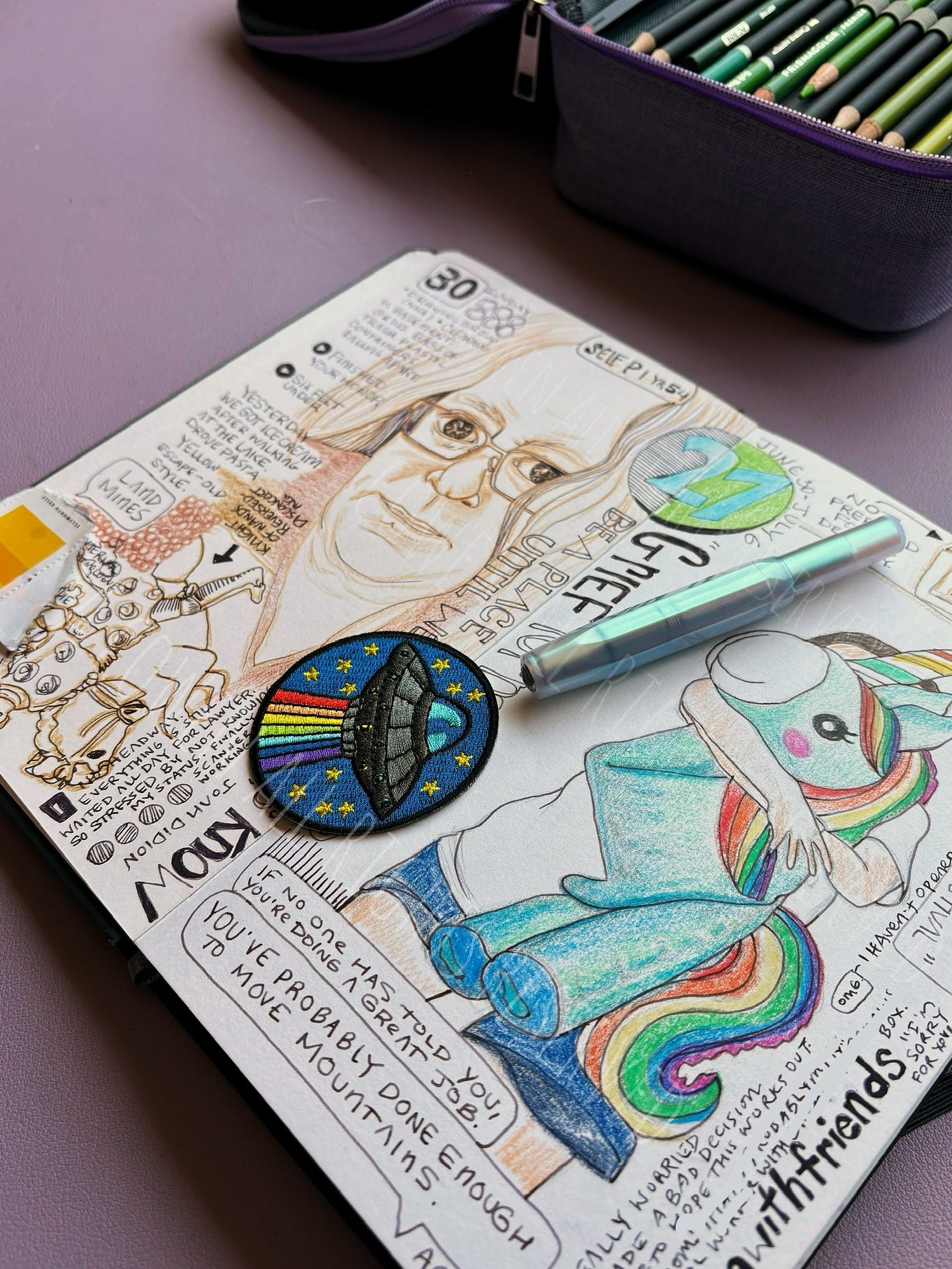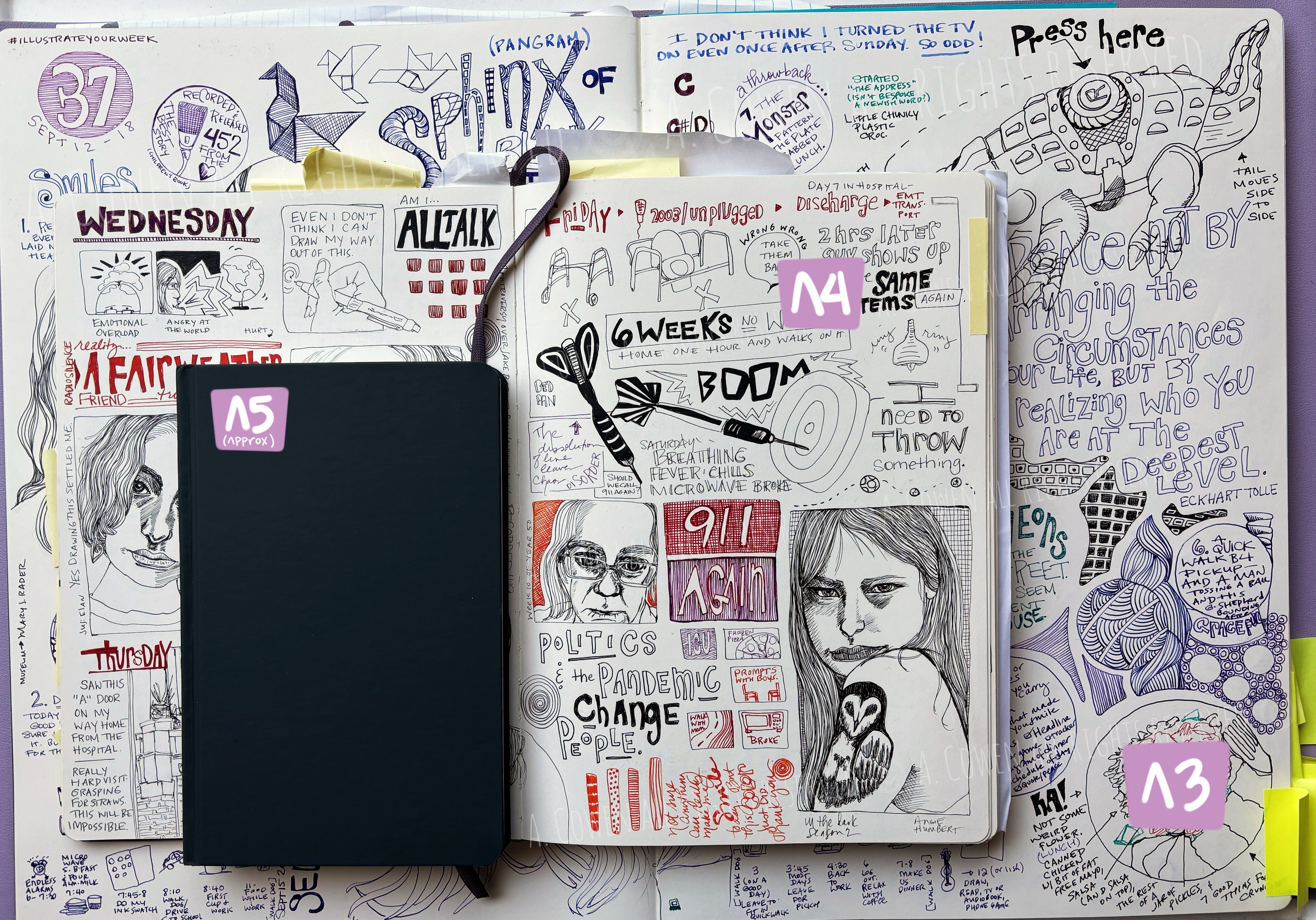Scaling down. How big is your journal?
Sometimes, we need to expand; sometimes we need to compress space and time. Usually, it's just instinct.
Illustrated Life is a reader-supported publication. Thank you to everyone who reads. Thank you to those who hold paid subscriptions that help make this space possible.
Size Matters
When it comes to a journal, a blank book, a sticky note, an index card, or a planner, size matters. It affects how we approach the page. It provides a clear construct.
There is this much space to fill.
It isn’t that bigger is better or that smaller is more virtuous. Size matters simply in terms of how the available space makes you feel when you spend time with your sketchbook or journal.
Do you need to unfurl and stretch your wings? Do you need to be held? Does a lot of extra space make you feel anxious? Are you driven to fill every bit of space? How big do you draw?
When I first started talking and writing about journaling and creative habit back in 2006, I didn’t yet know myself on the page, but I was drawn to the margins and to the idea of documenting daily life. One of the first stories I shared was about someone who made postage-stamp-size art. It might have been before the term inchies came into being, or maybe it was exactly that, an example of inchies. I was fascinated by the scale of the art being so closely tied to the realities of fitting art into and around an ordinary life.
Through the years, I’ve drawn and made notes in various sizes of journals and sketchbooks.
My default mode of being, my creative modus operandi, is to fill the space.
That sounds rather obvious. You can’t draw larger than the available space, right? But sometimes you can. Sometimes, you fill space and leave parts of a drawing to trail off into the unknown. The ways in which we crop or zoom in on a drawing, what we choose to show, and how we choose to layer can transform the composition.
Sometimes you might tip in an extension, literally continue a drawing beyond the scope of the page, folding it in and then out again to expand and contract the space.
I’ve always been a fan of things that break form, break boundaries, and continue conversations in the margins and in interstitial spaces.
The Space Between
A diptych self-portrait I did in one of the two art classes I took in college, a virtue of a liberal arts education, was such a wonderful visual embodiment for me of the unknown, of the unspoken, and of the unseen.
I still remember trying to explain that pair of paintings to my classmates. It isn’t that they were very good paintings. The memory isn’t about that. The memory is about trying to make others understand that you could set the two paintings side by side, butt them right up next to each other, and the self-portrait was intact. But you could also separate them, leave space in between. The self-portrait remained, but it also visibly incorporated the distance and depth of the space between, the things unknown and unsaid.
That you could move the paintings farther apart and continue to play with that space intrigued me.
Philosophically, we have the ability to occupy infinitely more space than just the size and shape of our physical form.
In more practical terms, we draw and write into the space(s) we are given.
For me, that tends to mean I fill the page.
I also tend to run out of space.
No matter what size sketchbook I am using, I tend to not have enough room. I often choose portraits to work on because I like something on the shirt, a tattoo on the neck or the arm, or something happening with the hands or torso.
Invariably, I get most of the head in and not much else.
This is often true whether I am working on a small piece of paper or in a larger sketchbook.
(A paywall has been added here. This post was free to read when first shared.)
Keep reading with a 7-day free trial
Subscribe to Illustrated Life to keep reading this post and get 7 days of free access to the full post archives.






